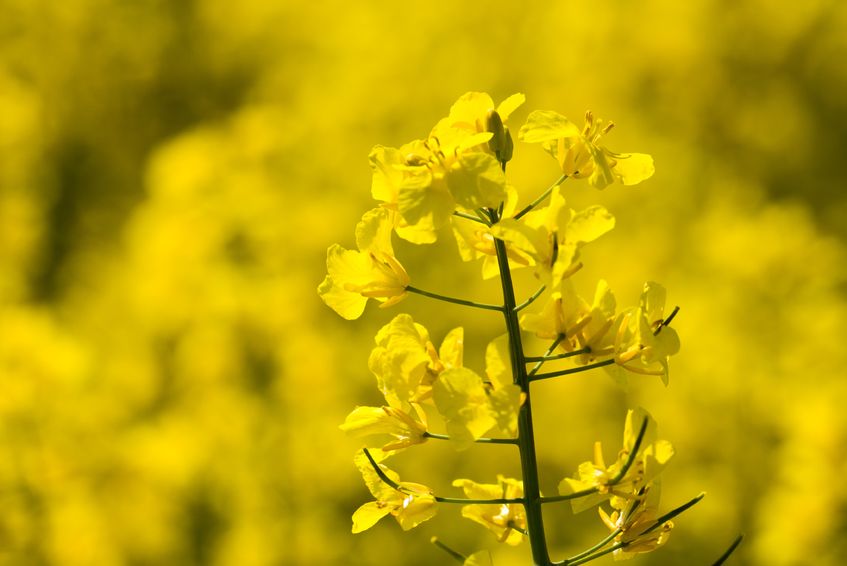
Stronger yields, improved disease resistance and a greater choice of specialist and quality traits are among the key developments in AHDB's updated Recommended Lists.
Launched this week, the RL 2020/21 for cereals and oilseeds offers a greater choice of varieties for a complex growing and market environment.
AHDB has also launched a variety selection tool for winter wheat and spring barley.
The tool, which will extend to other crops in 2020, provides a way to navigate RL data, make comparisons and identify the most promising varieties.
New winter wheat feed varieties deliver marked improvements in disease resistance, without compromising yield or quality. A new Group 2 spring wheat variety offers good milling quality.
For oilseed rape, new options for all regions bring a big step forward in yields, combined with improved disease resistance.
Turnip Yellows Virus (TuYV) resistance now features in a quarter of all recommended varieties.
Specialist varieties also offer new options for clubroot resistance and herbicide tolerance. A new high erucic acid rapeseed (HEAR) variety also features.
Finally, the RL2020/21 also sees the return of a semi-dwarf variety to the list.
Two new feed varieties feature on the list for winter barley. Four new spring barley varieties are also under test for malting and two new feed varieties offer improved yield.
Winter and spring wheat
New soft feed wheat RGT Saki combines near-group leading treated yield (104% of control varieties), with strong disease – septoria tritici (6.8), yellow rust (9) and brown rust (8) – and orange wheat blossom midge (OWBM) resistance.
Hard group 4 feed wheats SY Insitor and KWS Kinetic offer improved treated yield, compared to current sector leaders (105% and 104%, respectively), good specific weight and OWBM resistance.
However, brown rust in SY Insitor and septoria tritici in KWS Kinetic will need watching.
Recommended for the West region, Theodore has a strong overall disease package, including exceptional septoria tritici resistance (8.2) and a high untreated yield. However, its relatively low specific weight may concern some growers.
In the spring wheats, new Group 2 variety Giraffe (from KWS) shows good milling qualities with a solid disease package. Despite its name, Giraffe is one of the shortest spring wheats on the RL.
Winter oilseed rape
Thirteen new winter oilseed rape varieties feature on the RL, with five recommended for specialist purposes.
For the UK, the new varieties, Acacia, Ambassador, Aurelia, Artemis and Aardvark (all from Limagrain), have improved gross output yields (GO) over the previous highest yielding variety (Aspire), in one or more regions.
Acacia has an impressive 110% GO yield in the East/West region. The improvements in yield do not come at the cost of poor agronomic characteristics, with generally stiff straw and similar or improved disease resistance over current varieties.
Of particular note is Aurelia, with high resistance ratings (8) for both light leaf spot and phoma, as well as TuVY resistance.
For the East/West region, Dazzler and Darling combine good yields with a strong disease package, including stem canker ratings of 8 and TuYV resistance.
For the North region, Blazen has high GO yield (105%), good disease resistance and short, stiff straw.
Several new specialist varieties are recommended for the East/West region. Crocodile (from DSV) and Croozer (from LSPB) offer resistance to the common strains of clubroot and have short, stiff straw.
Such varieties need to be used carefully to avoid the spread of resistance-breaking clubroot strains. Crocodile offers high GO yield (105%).
Croozer has a GO yield of 102% and boasts a good disease package, with a rating of 9 for stem canker and 6 for light leaf spot.
PX131 (from Corteva) is a described semi-dwarf variety with good stem canker and light leaf spot resistance.
Also recommended for this region is the herbicide-tolerant (Clearfield®) variety Nizza CL. This has stiff straw, good phoma stem canker resistance but a low light leaf spot resistance rating (4).
Finally, Resort replaces Ergo on the list as a described HEAR variety. Compared to Ergo, Resort offers increased GO yield and better disease ratings. It is recommended for the UK.
Spring and winter barley
The four new spring barley varieties are on test for malting and farmers should speak to merchants before they are grown.
SY Splendor, on test for brewing, offers a yield improvement over current varieties at 107%, with good specific weight.
Iconic (from Agrii), also on test for brewing, has recommendation for the West region only. Although behind on yield (at 102%), it has very good brewing characteristics that should suit markets in the West.
Firefoxx (from Elsoms Ackerman) is a new malt distilling variety with improved yield, especially in the West region.
Finally, SY Tungsten has potential for both brewing and malt distilling. It offers improved yield, particularly in the West and North regions.
Two new spring barley feed varieties, Fairway and Prospect (both from Senova), offer increased yield over current varieties, particularly in the East and North regions.
Two new two-row winter feed barley varieties, KWS Hawking and Jordan (from Elsoms Ackerman), offer small yield increases over varieties with similar agronomic packages.
Spring oats
The husked spring oat variety WPB Isabel offers both increased yield and good quality, with a kernel content of 76.8 % and an exceptional specific weight (55.7 kg/hl).
